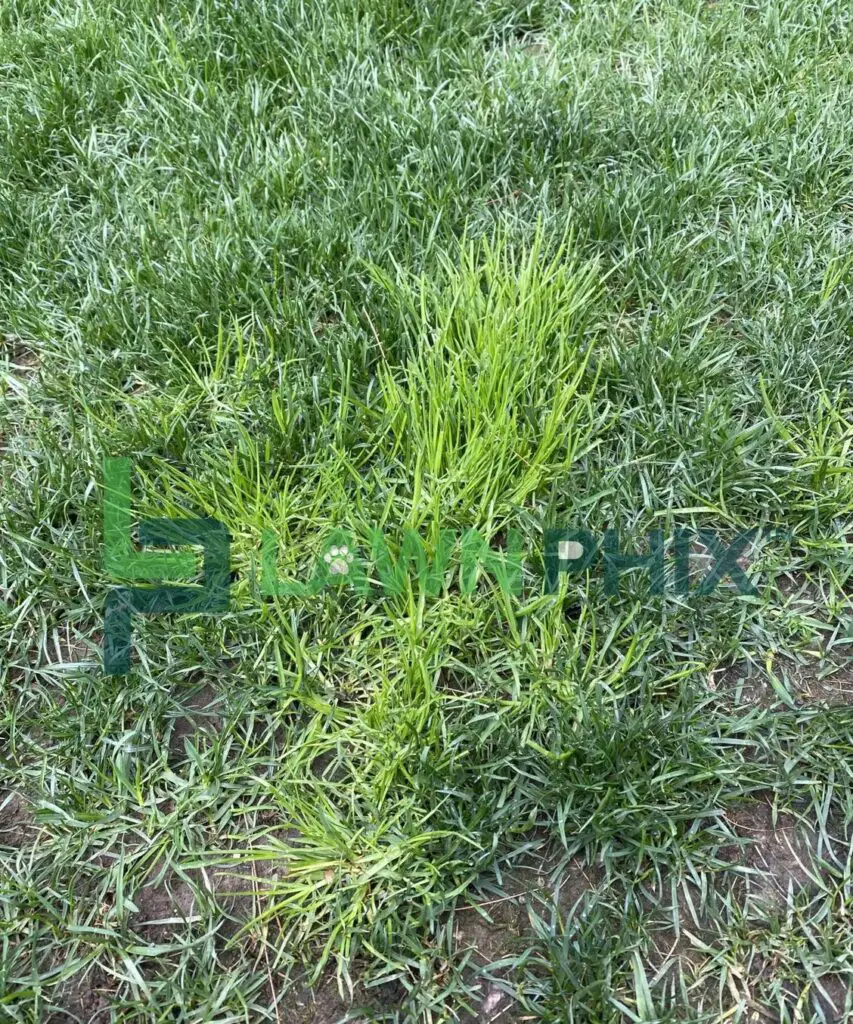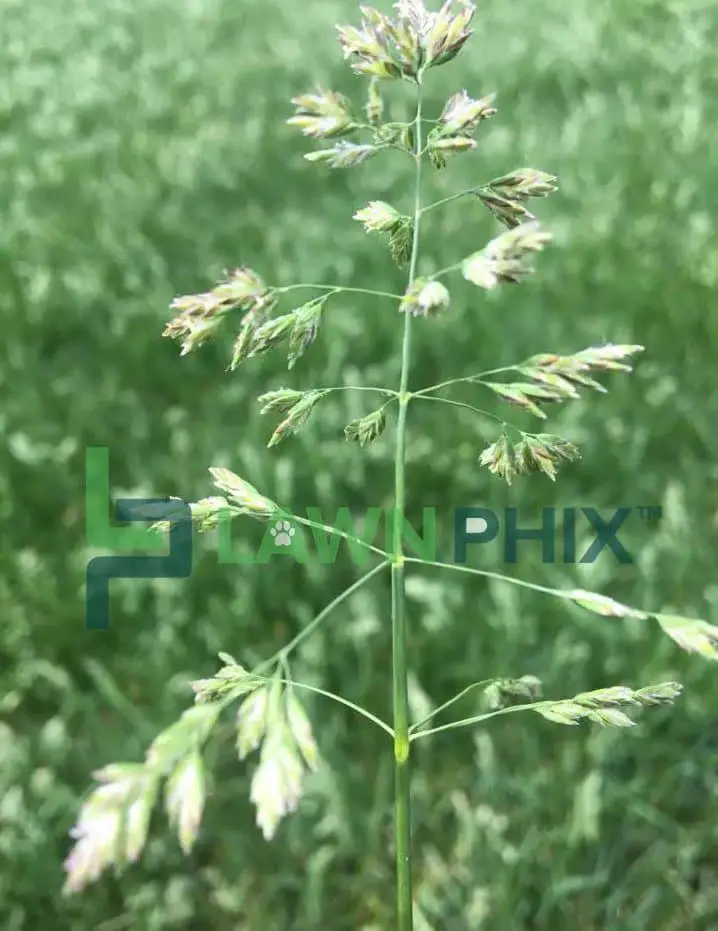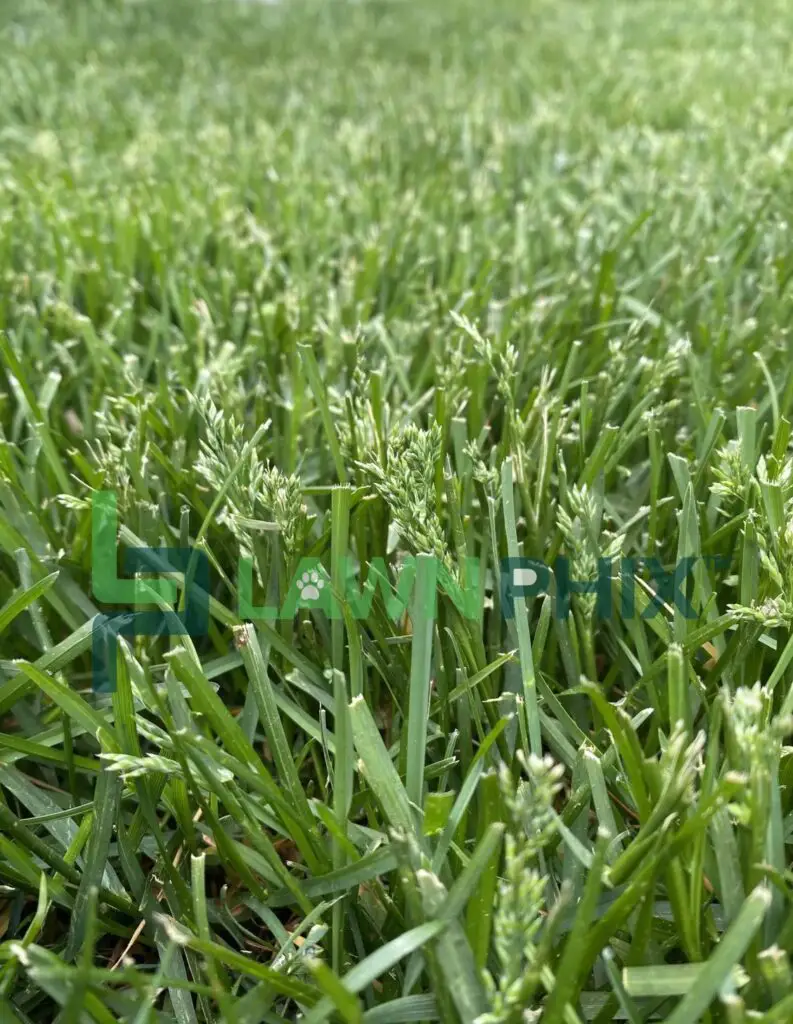It seems to be every year – particularly in the spring and early fall – that lots of questions about “patches in my lawn” pop up. I professionally treat over 15 acres of turf and see it all. Light green, dark green, lime green – you name it. Whether it be from social media posts and forums to my customers, this is a popular question, and I am here to share some images and quick descriptions of a few possibilities.
Table of Contents
POA TRIVIALIS
A perennial grass. It grows in clumps and has a distinct lime-green color. Prefers damp conditions. Avoid overwatering. Requires a non-selective herbicide to eliminate.
I have so much of this in my backyard. Along my deck area gets a lot of shade and I have too much irrigation overlapping, so it creates the perfect environment for poa triv. The patches stick out like a sore thumb.

POA ANNUA
An annual grass – also called annual bluegrass. It also grows in clumps and a lighter green color. This goes to seed (around this time) and can be mitigated with fall pre-emergents. Two apps of Mesotrione can also damage this plant.
I used a heavy application of Pendulum in the late summer of 2022 and it did a great job at suppressing the poa annua in 2023. I only saw a couple of spots here-and-there but nothing compared to the amount I had in 2022. I’d use Pendulum or Prodiamine as the pre-emergent herbicide of choice when trying to eliminate future crops of poa annua.

KBG GOING TO SEED
This is Kentucky Bluegrass going to seed. This is called “stemming”. It is normal and happens every year. See how these seed heads are more vertical and “tighter” than the previous image of Poa Annua. Continue frequent mowing when you see this in the springtime.
Note: these seed heads will dull your mower blade more so than grass blades. Check your blade sharpness this time of year and have backup Oregon Gator/G3’s on hand.

CREEPING BENTGRASS
A perennial cool-season grass. It grows and spreads with rhizomes and stolons and is very difficult to manage. I believe this is introduced into lawns through bags of grass and core aeration. While fall is the most common, and best time to aerate a lawn, the pulling of soil cores in both fall and spring can propagate any seeds beneath the surface. Bentgrass is no different.
I can’t stand this stuff. It’s the Bermuda grass of the north. Great on golf courses but my least desirable grass on lawns. Herbicides can damage this (brown) while Mesotrione will bleach it white. Best results to kill requires a non-selective herbicide to eliminate, but you can use 2-3 applications of Mesotrione. The first should contain Triclopyr and a non-ionic surfactant (NIS), while the second and thrid should only be Meso + NIS (needs to wait 30 days to seed after spraying Triclopyr.
Check out my second bentgrass renovation of 2023 here.



